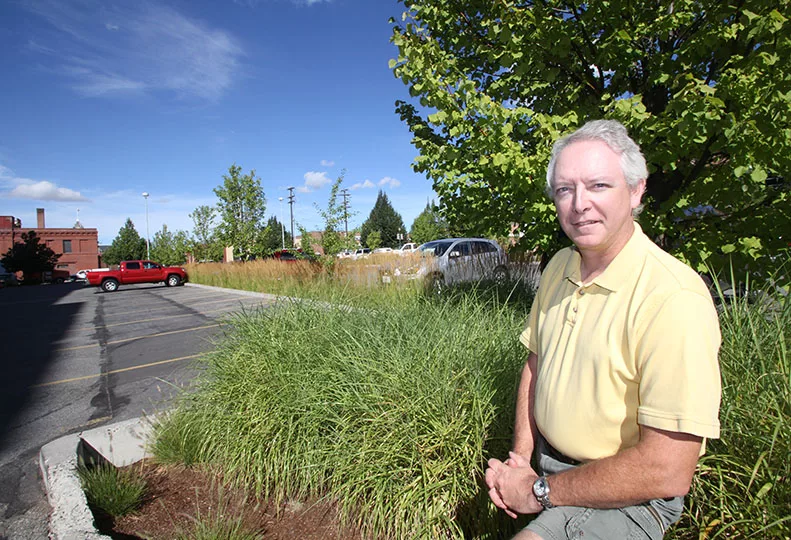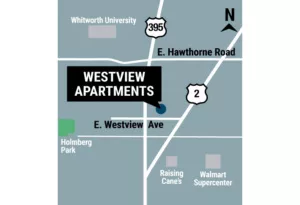
Home » City adopts guidelines for green building site practices
City adopts guidelines for green building site practices
Designers applaud steps, but say techniques should stay optional

September 12, 2013
Developers planning commercial projects in the city of Spokane now have the option to follow guidelines the municipality has adopted to promote the use of green, low-impact development techniques to absorb stormwater.
The Spokane City Council approved a low-impact development ordinance on Aug. 26 that defines acceptable construction practices to filter and retain stormwater close to where it falls, and it offers property owners a break on commercial stormwater fees for employing such practices.
While the ordinance supports the city's efforts to reduce overall stormwater runoff, it also is part of a consent decree entered into by the city and an advocacy group called Spokane Riverkeeper. The decree followed late 2009 allegations against the city and potential legal action by Spokane Riverkeeper regarding water quality issues and the Federal Clean Water Act.
Marlene Feist, city spokeswoman, says the new ordinance applies emerging building practices that the Washington state Department of Ecology developed for an Eastern Washington low-impact development guidance manual. The techniques include using permeable pavement, infiltration planters, rooftop landscaping, and natural landscape features.
Feist says property owners who use the low-impact building practices for new construction or remodeling projects can apply with the city building department for inspections to receive a new 10 percent discount against what they pay for commercial stormwater rates.
The city's current stormwater commercial rate is $900 a year per impervious acre, which means hard-surface areas, Feist says. If properties are in what are called combined sewer overflow areas (CSOs) in older sections of Spokane, the city charges an additional stormwater user surcharge of $791 a year per impervious acre.
The newly adopted ordinance offers a 10 percent discount against both of those charges, she says, plus the option to build what is called a roof rainwater harvesting or vegetated roof feature for a separate 10 percent discount applied against the CSO surcharge.
City property owners already have other options to apply stormwater management techniques for up to a 30 percent discount from the $900 stormwater discharge rates, Feist says. "Now if you do everything, it could be up to a 40 percent discount on the main $900 commercial fee."
In some cases, the low-impact development practices cover a smaller area of a property than a traditional grassy swale used for stormwater filtration, "so you'll have more buildable area," Feist says.
Conventional stormwater management often includes building a large evaporation pond or grassy swale that can take up a wider section of a property, Feist says.
Tom Sherry, president of Spokane-based SPVV Landscape Architects, says that while he applauds the city's new guidelines as steps that help reduce the amount of pollutants entering the aquifer and the Spokane River, he supports that the city made the strategies optional.
"As an option, I think the low-impact methodologies are fine," Sherry says. "The concern is that while these options are used in other parts of the country, in a lot of cases if not all cases, they are much more expensive to install here."
Tom Arnold, a principal with the Spokane office of Coffman Engineers Inc., says he too supports that the city now has a set of standards that open up dialogue for property owners to apply low-impact building approaches—as long as the guidelines remain an option.
"Putting this together as a guideline is a great step," Arnold says. "If there was a developer who asked us to do this previously, that would be a design deviation from city standards, so now we have the ability to facilitate the process with the city."
However, Arnold adds, "Low-impact development is definitely a little more expensive not only to design and build, but also to maintain and operate, so it's important that it remain a guideline and not a requirement of development."
Arnold says he wrote a letter to the city regarding the ordinance in part to emphasize that the city needs to remain flexible in applying the best practices for low-impact construction site standards. He adds that the ordinance mainly applies to the property surrounding a structure, while green building standards for Leadership in Energy and Environmental Design (LEED) apply more to structures.
"Low-impact development is aimed more at the site itself, but it's very similar to the LEED program," Arnold says. "They mesh well together."
Sherry says SPVV in recent years has applied some techniques outlined in the ordinance for design work here, such as for upgrades to the Flour Mill parking areas. That property includes what is called a rain garden, as a narrow landscaping strip along the center of the lot with a small depression in the ground filled with drought-tolerant plants and soils to absorb moisture.
The Flour Mill parking area also has a separate, more traditional grassy swale area covered with grass typically used for lawns.
Both rain gardens and grassy swales are used to collect and dispose of stormwater runoff. While the rain gardens are similar in function to a conventional grassy swale, they typically have reed grass, bunch grass, shrubs, and trees that require infrequent trimming and moderate water to get established for the first year or two.
Sherry says some applications of the low-impact techniques here require secondary backup drainage systems, mainly because of Spokane's winter ice and snow conditions. Another example of additional expense is that permeable pavement generally has a shorter lifespan, roughly lasting about 15 years, compared with conventional surfaces such as concrete that can last more than 30 years.
"I think there are a lot of places in Spokane where this is appropriate technology," Sherry adds. "I think people at the city of Spokane recognize this, and I think they also recognize there are places in Spokane where this wouldn't work because of high groundwater; soils that aren't permeable."
Arnold says some developers likely will embrace the low-impact development options.
"I think people are always looking for ways to make a better development," he says. "I think this give people more options, and there are developers out there willing to do that."
Latest News Up Close Real Estate & Construction Government
Related Articles
Related Products


